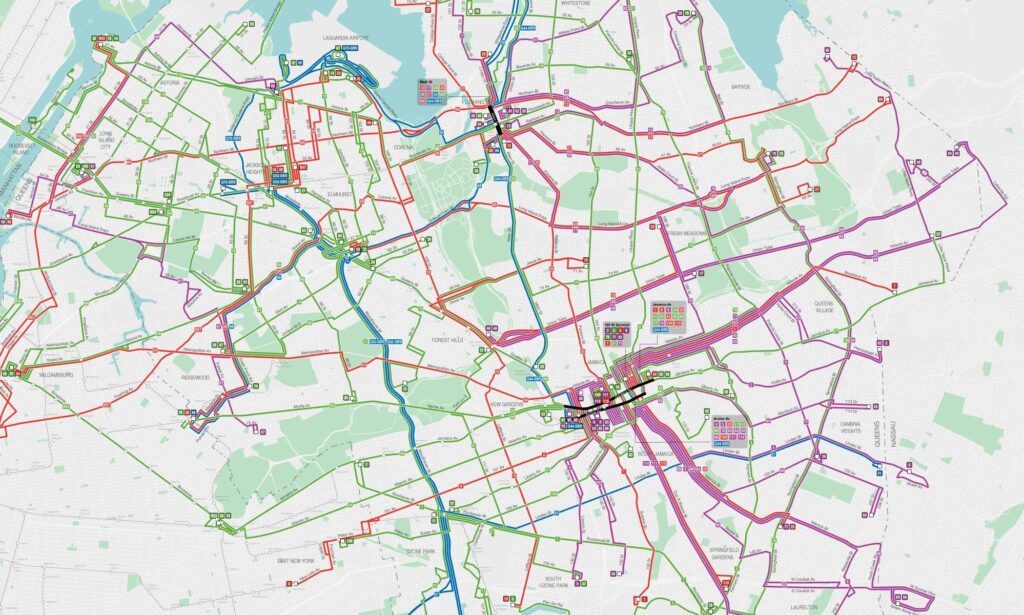Transforming Transit in Queens: Early Successes and Future Directions of the Bus Network Overhaul
Initial Outcomes Highlight Progress in Queens Bus System Revamp
The recent overhaul of Queens’ bus network is already demonstrating encouraging results, signaling a pivotal advancement in the borough’s public transportation landscape. Early performance metrics and commuter testimonials reveal notable enhancements in punctuality, reduced waiting periods, and stronger route integration. The Metropolitan Transportation Authority’s (MTA) ongoing efforts to fine-tune the system underscore how strategic planning combined with community input can revolutionize urban transit.
- Wait times on revamped routes have decreased by approximately 15%
- On-time arrivals have surged from 70% to over 85%
- Accessibility improvements benefit seniors and passengers with disabilities
- Community insights actively shape ongoing adjustments
Data collected since implementation shows a rise in daily ridership along priority corridors, supporting the city’s goals to reduce car usage and lower carbon emissions. The following table summarizes key performance indicators before and after the redesign:
| Metric | Before Redesign | After Redesign |
|---|---|---|
| Average Bus Speed (mph) | 12.3 | 15.1 |
| On-Time Performance | 68% | 87% |
| Daily Ridership | 75,000 | 85,500 |
Although some challenges persist, these early indicators affirm the redesign’s potential to foster a more inclusive and environmentally sustainable transit system in Queens.
Enhancing Daily Travel: How Redesigned Routes Benefit Queens Commuters
Queens residents are already experiencing tangible improvements in their daily journeys thanks to the bus network’s restructuring. The redesign focuses on optimizing routes to minimize travel durations, boost service frequency, and strengthen connections throughout the borough. This has resulted in fewer transfers and shorter wait times, directly enhancing the reliability and convenience of bus travel. During peak periods, express services on high-demand corridors help alleviate congestion and provide a more comfortable ride.
- More direct routes that eliminate unnecessary detours
- Increased bus frequency during rush hours to meet demand
- Upgraded transfer hubs featuring clearer signage and improved shelters
- Accessibility enhancements tailored to passengers with disabilities
| Route | Previous Average Commute | Current Average Commute |
|---|---|---|
| Q44 | 40 minutes | 28 minutes |
| Q60 | 35 minutes | 25 minutes |
| Q53 | 45 minutes | 33 minutes |
Data-Driven Insights Confirm Gains in Ridership and Operational Efficiency
Recent statistics validate the positive impact of the Queens bus network redesign, with ridership climbing by 15% on routes that benefited from schedule improvements and route consolidation. The streamlined service patterns have enhanced predictability and cut average wait times at major stops by up to 25%, boosting overall rider satisfaction.
Operational efficiency has also improved, with buses maintaining better punctuality and experiencing shorter dwell times. Key performance metrics since the redesign include:
| Performance Metric | Before Redesign | After Redesign | Change |
|---|---|---|---|
| On-Time Performance | 72% | 88% | +16% |
| Average Wait Time (minutes) | 12 | 9 | -25% |
| Passenger Load Factor | 80% | 95% | +15% |
- Accelerated boarding: Achieved through redesigned stop layouts and contactless fare payment options.
- Greater route dependability: Resulting from the elimination of redundant stops and overlapping services.
- Optimized vehicle allocation: Balancing bus deployment between peak and off-peak hours for better capacity use.
Strategic Recommendations to Sustain and Broaden Network Enhancements
To capitalize on the initial momentum of Queens’ bus network improvements, ongoing data analysis and rider engagement are critical. Regularly tracking travel patterns and soliciting community feedback will help identify new challenges and opportunities for service adjustments. Establishing continuous dialogue with passengers through surveys and public forums ensures that transit solutions remain equitable and responsive, particularly for those most reliant on public transportation. Collaborations with local authorities and neighborhood groups can further tailor interventions to address specific transit needs.
Priority initiatives include:
- Expanding bus priority infrastructure: Increasing dedicated bus lanes and implementing traffic signal prioritization to minimize delays.
- Modernizing the fleet: Introducing cleaner, more reliable buses to enhance rider comfort and reduce environmental impact.
- Strengthening multimodal connections: Creating seamless transfer points between buses and other transit options to simplify commutes.
- Inclusive planning: Enhancing accessibility features and language services to better serve Queens’ diverse population.
| Initiative | Expected Outcome | Implementation Timeline |
|---|---|---|
| Real-time Data Integration | Enhanced adaptability to shifting demand | 1-2 years |
| Expansion of Bus-Only Lanes | Reduced congestion and faster travel | 2-4 years |
| Ongoing Community Engagement | Higher rider satisfaction and inclusivity | Continuous |
Summary: Building on Early Successes for a More Efficient Queens Transit Future
The Queens bus network redesign’s initial achievements provide a hopeful outlook for the borough’s public transportation system. Enhanced travel times, improved reliability, and positive community feedback highlight the benefits of well-executed transit reforms. While obstacles remain, the commitment to iterative improvements and active rider participation lays a strong foundation for a more accessible, efficient, and sustainable bus network. The upcoming months will be pivotal in expanding these gains and shaping the future of urban mobility in Queens.













